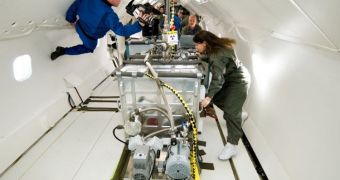One of the biggest hurdles preventing the exploration of space at a large scale is the lack of a means to carry the vast amounts of supplies needed around. Now, experts suggest two technologies that could make packing for a trip to space a piece of cake.
There are many scenarios when it comes to visiting other worlds where space parts are absolutely needed. However, in the case of establishing a Martian base, for example, resupply flights would be spaced a minimum of 7 months apart, probably more.
Under such circumstances, the failure of a critical component that has no replacement would spell the end of that particular mission. On the other hand, no spacecraft is currently large enough to enable future explorers to take everything they need, plus spares.
Some experts believe that the best way to address this issue is to relay on additive manufacturing technologies, which include methods of building objects layer by layer, or printing them in 3D.
Three-dimensional printers are nothing new, scientists say. Tabletop versions are the most common, but some proof-of-concept, large-scale versions of the device can build an entire house out of concrete, all on their own, Space reports.
These approaches are able to produce objects from hard plastics or certain metals. Not everything a crew would need on another world can be synthesized in this manner, but many habitat and spacecraft components can.
Astronauts who spent time aboard the International Space Station say that their future counterparts will need to be able to manufacture everything they need on the go, therefore severing their dependency on Earth for supplies as much as possible.
NASA has been working on making this a reality for many years. At this point, its Electron Beam Freeform Fabrication (EBF3) system appears the most promising. It was already tested in microgravity – during parabolic flights – back in 2007, and the agency is now working on improving it.
But engineers face many challenges in their efforts. The system needs to operate reliably in microgravity, has to be straightforward in its operations, as well as astronaut-friendly, all while being able to produce a very wide array of objects.
“Just as Christopher Columbus brought tools with him to help explore the New World. NASA is developing an on-demand additive manufacturing tool that will allow space explorers to build what they want, when and where they need it,” NASA Langley Research Center materials research engineer, Karn Taminger, concludes.

 14 DAY TRIAL //
14 DAY TRIAL //